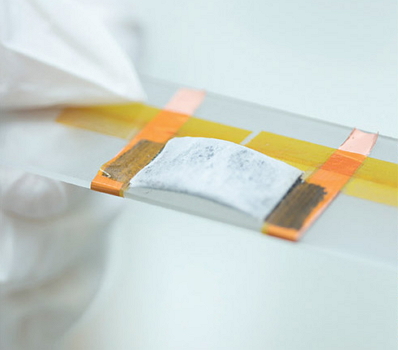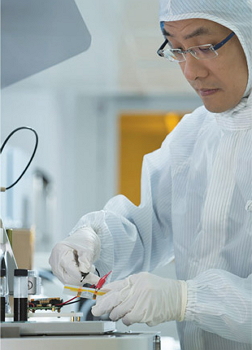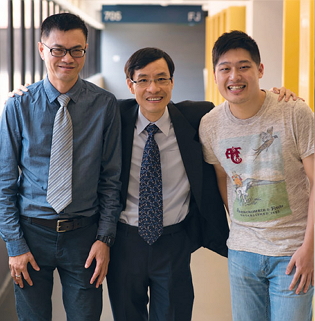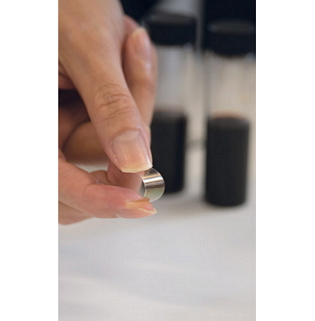for a greener world


Prof. Lau produces energy storage device via printing with MnO2 ink.
High-capacity glucose-synthesised ink for energy storage
Glucose is not only an energy source in humans, but can also be used to fabricate energy storage devices. Prof. Daniel Lau and Dr Yuan Jikang at the Department of Applied Physics recently developed a simple approach to synthesise manganese dioxide (MnO2) ink using glucose.
The conventional preparation method for MnO2 electrodes involves high cost, complicated processes and results in reduced electrical conductivity brought on by the coating process. In contrast, the PolyU-developed approach is simple, using microwave hydrothermal method to prepare highly-crystalline carbon particles and then morphology transmission mechanism at room temperature to synthesise stably-structured aqueous MnO2 ink.
The ink can be coated on various substrates, such as conductive paper, plastic and glass. Its thickness and weight can also be controlled for the production of energy storage devices. Substrates coated by MnO2 ink can easily be erased if required, facilitating the fabrication of electronic devices.
The ink can then be used to produce low-cost, high-performance energy storage devices via ordinary printing, even at home. Prof. Lau points out that a MnO2 ink supercapacitor’s capacity is more than 30 times higher than that of a commercial capacitor with the same weight of active materials, for example carbon powder.
The MnO2 ink supercapacitors are small, light, thin and flexible, which along with their high energy capacity will allow them to be used in wearable devices and radio-frequency identification systems, as the power sources for flexible and bendable display panels, smart textiles, smart checkout tags, sensors and luggage tracking tags.
The related research paper has been published in Angewandte Chemie International Edition, a leading journal in chemistry. ♦


